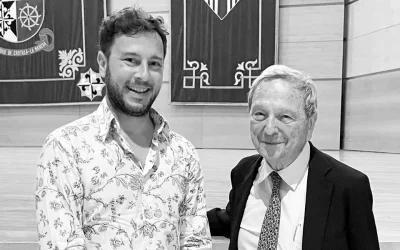INFORMACIÓN BÁSICA SOBRE COOKIES
Nuestra página utiliza cookies técnicas. Estas son propias y necesarias para el funcionamiento correcto del sitio. No necesitan de tu autorización y son las únicas que tenemos activadas por defecto. Por tanto, son las únicas cookies que estarán activas si rechazas o no pulsas el botón ACEPTAR.
El resto de cookies sirven para mejorar nuestra página, para personalizarla en base a tus preferencias, y para mostrarnos métricas sobre las visitas en nuestro sitio. No se activarán en el caso de que pulses el botón rechazar o no aceptes expresamente. Puedes activarlas o desactivarlas en nuestro apartado CONFIGURACIÓN DE COOKIES.
Si quieres más información, consulta la POLÍTICA DE COOKIES de nuestra página web.
Aceptar todo Rechazar Cookies no necesarias Configuración de Cookies



